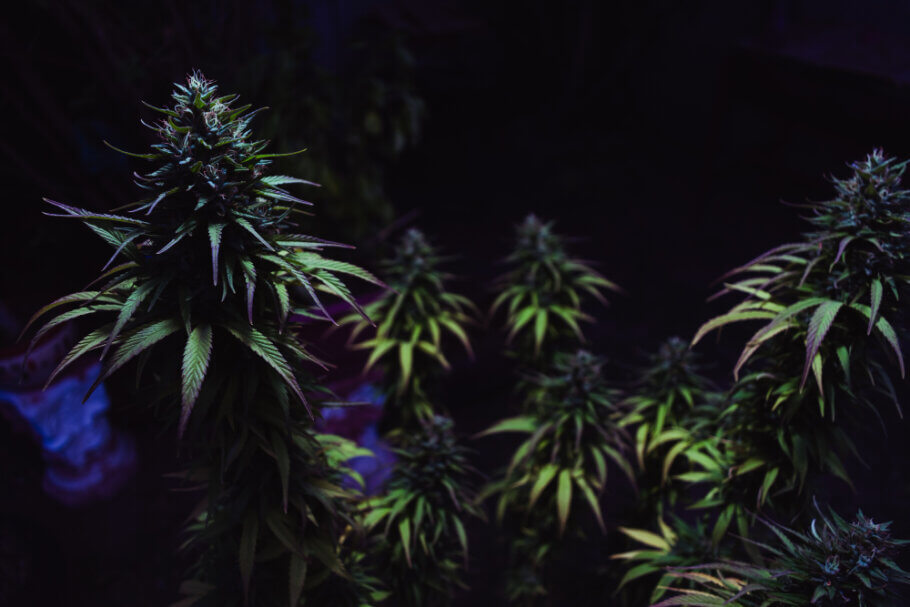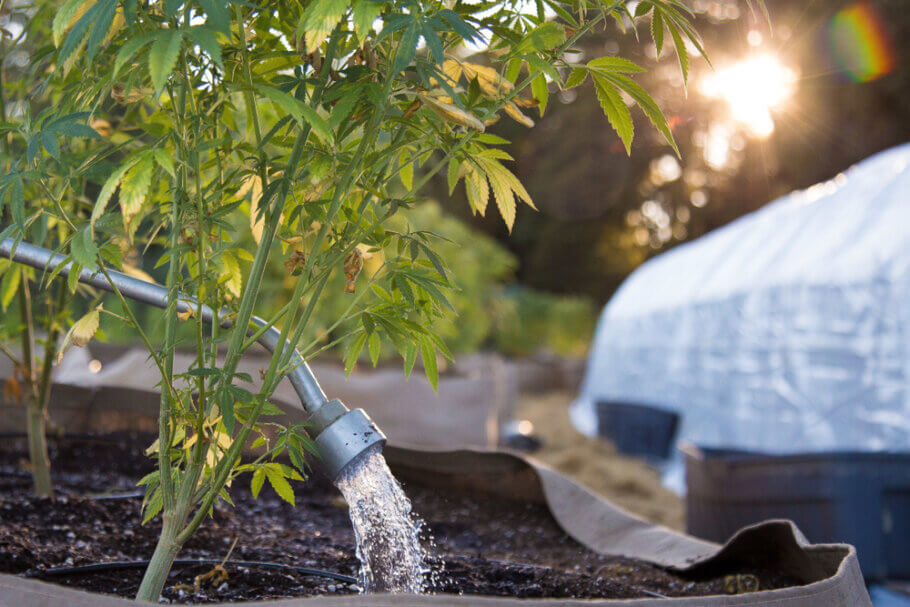Frozen water or ice when watering cannabis
List of contents
In the world of cannabis cultivation, innovation often gives way to techniques that challenge established conventions and are not always backed by scientific studies demonstrating their effectiveness. A practice that has sparked debate and conflicting opinions in recent years is to use ice water for irrigation or to add ice cubes into the substrate at the end of flowering, which would achieve a series of hypothetical benefits.
This controversial technique, which goes beyond traditional methods, has been endorsed by some growers, while others assure that it does not achieve a significant change in the plants, thus being the subject of skepticism and various questions. In this article, we will tell you the theoretical benefits of adding ice to the substrate in the final stages of growing your plants, as well as the possible risks, all this taking into account both the positive testimonies that surround this practice and the divergent opinions that have made it on such a debated topic.

The cold in cannabis cultivation
If you are a reader of our Blog, you probably remember our article on marijuana cultivation and cold. Although the ideal temperature for growing cannabis is in a range between 20 and 30ºC, sometimes it is not possible to maintain these temperatures, which is normal outdoors during the end of flowering or indoors during winter. But what exactly happens if the temperature drops below the 20ºC barrier?
Although these low temperatures are ideal for combating most pests, which tend to develop in warmer environments, temperatures below 20ºC can begin to cause other problems, especially if they drop below 15ºC. Normally, and unless we are talking about plants really adapted to the cold, the general development of the plant slows down considerably below 15ºC, as its metabolism does. Furthermore, and especially if we talk about the temperature of the substrate or irrigation water, basic elements for good performance such as magnesium or phosphorus stop being correctly assimilated, with the problems that this can bring, which basically boil down to poor flowering.
However, in recent years you may have heard of people adding ice cubes to the substrate at the end of flowering, or directly using very cold water during the root washing period, which usually begins around 10-14 days before the start of the harvest. We explain why they do it.
Flushing roots, myth or reality?
Root flushing at the end of cultivation is a common practice among many growers, especially those using hydroponic systems or mineral nutrients. However, in recent years several studies have come to light that would question the effectiveness of this method. Today we delve into this topic and we tell you in detail the conclusions reached by these investigations.
Stress techniques to improve trichome production
Unless you are new to growing marijuana, you have likely heard of techniques used to increase the production of trichomes in plants, especially at the end of the flowering stage. Apart from the classic tricks such as pruning and bending techniques or the use of PK boosters and supplements rich in phosphorus and potassium, there are other methods such as prolonged periods of complete darkness, the use of UV lamps, or the one we are dealing with today, watering the plants with ice water.
Some of these techniques are supported by scientific studies, such as providing plants with a period of 48-72 hours of total darkness just before harvest; In fact, after a three-way trial carried out by the Dutch Stichting Institute of Medical Marijuana (SIMM), the company TNO Laboratories and the University of Leiden, it was concluded that this controlled stress method can represent a increase in THC content of up to 30%, while no increase was observed concerning the content of other compounds such as CBD or CBN.

However, other techniques such as the one we are dealing with today do not have studies of this type, so their effectiveness is questionable (especially when, as is the case, we find high-level growers both for and against its use). That being the case, and taking into account the low cost and work involved, it is probably best to try this technique for yourself and see if it works or not. If you want to do it, we recommend using clones of the same plant and trying the technique with only half of them, taking care of the rest of the cuttings as you would normally do to be able to see differences between them at the end of the crop. Of course, the test should be done in the same growing space and at the same time.
How to improve the production of cannabis trichomes
Is it possible to obtain more resin from cannabis plants? And what about cannabinoids and terpenes? Can you also boost their production? In this article we answer all these questions and give you a few simple tricks to achieve higher yields in terms of trichomes quantity and quality.
Should I water my plants with ice water?
If you decide to try this system, and apart from the advice we have just given you, you can choose to water your plants with very cold water or directly cover the substrate with ice cubes. If you choose the second option, you probably won't have to worry about watering, since the ice will slowly melt and moisten the substrate, as if it were a drip irrigation system. Additionally, and especially if you combine this technique with leaving the lights off for the last 2-3 days, your plants' water consumption will be much less than with the normal photoperiod, so don't be afraid of your plants becoming thirsty.
What we do not recommend is to start this process when you start flushing your roots, especially if you are one of those who extend this period by 2 weeks. Doing so could help you improve trichome production, but it could also cause some problems for your plants...just when you don't want them!
Let's now look at some of the advantages and disadvantages of this system:
Why use ice water or ice for watering?
The supposed advantages that some growers attribute to applying ice water or ice cubes in the last days of flowering include:
- Increased resin production: It is stated, as we have already mentioned, that ice water can stimulate the production of trichomes and resin, which would potentially increase the concentration of cannabinoids and terpenes.
- Increased density and hardness of flowers: Some suggest that ice water can harden and densify the buds, which could contribute to a more attractive appearance and a possible improvement in the quality of the final product.
- Simulation of end-of-season conditions: It is argued that the application of ice water could mimic natural end-of-season conditions, which, according to some growers, could lead to greater resin production as a plant response to this source of stress.
- Promote the appearance of violet colors: Although it is more of a whim than an actual advantage, low temperatures both in the environment and in the root zone will encourage the appearance of dark colors in the leaves, from violet to almost black.

Why not use ice water or ice to water
Despite the potential benefits that this technique can bring us, there are also certain risks when applying it that are worth highlighting:
- Unnecessary stress to the plant: Freezing water can cause additional stress to the plant at a critical time in its life cycle. Extreme stress can negatively affect the overall health of the plant and, in extreme cases, compromise cannabinoid and terpene production.
- Possible root damage: Extremely cold water could cause damage to the plant's sensitive roots. Roots exposed to ice water may experience freezing, which would negatively affect nutrient uptake and the overall root system.
- Risk of mold and disease: The sudden temperature change can create an environment conducive to the development of mold and disease. Excess moisture associated with condensation resulting from cold water could increase the risk of fungal problems, especially if combined with prolonged periods of darkness.
- Hermaphroditism: In cases where the genetics of the plant have a propensity to show hermaphrodite traits (male flowers on female plants) when exposed to sources of stress, it is possible to trigger this response by watering with ice water, especially if it is done during several consecutive waterings.
As you can see, although some suggest that ice water could improve the quality of the buds, the lack of solid scientific evidence leaves open the question about the real impact on the final quality of the product. Multiple factors influence the quality of cannabis, and the application of ice water may not be the definitive solution to improve it. Without a doubt, what you should be clear about is that the quality of your cannabis will be determined by factors such as genetics or providing your plants with the correct climate and nutrition, in other words, following cultivation standards.
Stress techniques such as the use of ice water in irrigation are, so to speak, a twist that you may not need to take if the quality of your buds meets your expectations, although if you are a restless grower you probably can't wait to try it at this point. Of course, if you've already tried it and drawn your conclusions, feel free to share them in the comments section!





































































